Iberis perennial: varieties, selection, cultivation, reproduction
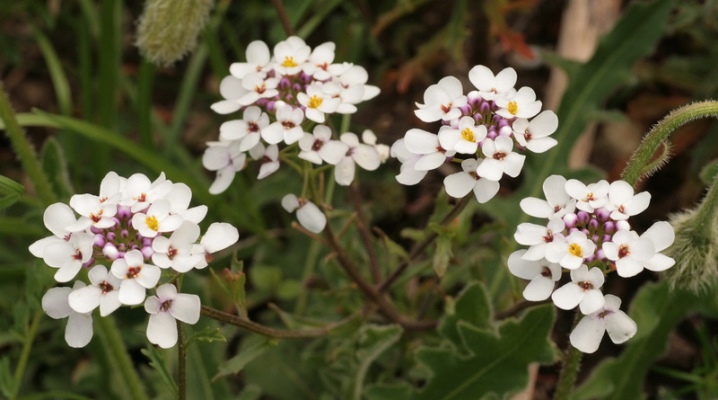
Iberis is a beautiful shrub from the cabbage family. It has many names: stennik, Iberian or variegated. There are about 40 species in its genus. The species are divided into warm-loving annuals and frost-resistant perennials. In natural conditions, it can be seen in mountainous areas: in the Caucasus, in the Crimea, in Central Asia. This flower was especially popular in Spain, where it got the name "Iberis". Over time, the flower took root in our latitudes and became very popular among gardeners. Thanks to its beautiful inflorescences, the plant is actively used when decorating flower beds, and is also used when creating bouquets.

Description
Iberis (Iberis) is a herbaceous shrub, reaching a height of 30 to 40 cm. The leaves are oval in shape, the maximum length is 7 cm. Their surface is glossy. The chic emerald shade of the leaves looks beautiful with flowers of various shades. It can be from white, yellow to purple. The flowers are collected in small umbrella-shaped inflorescences. The highlight of this plant is their location. They fit so tightly to each other that the image of a ball is created, under which greenery is practically invisible. Flowering lasts up to a month. The aroma is different for all varieties. For some, it is not even very pleasant.
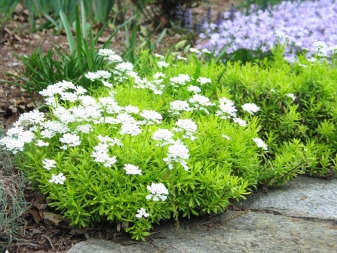
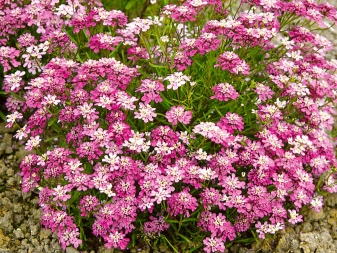
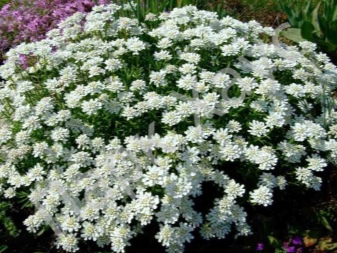
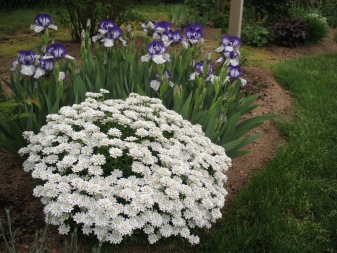
Care and cultivation
The shrub is very unpretentious, adapted to the climate of our latitude. An open area in the sun is a good planting site. In shade, the Iberis will not be so lush - it will begin to stretch, the buds will fall off. As for the soil, drainage is essential here. Sandy or rocky soil is ideal. They will allow air to pass through well and will not allow moisture to stagnate. At the end of flowering, dried stems and flowers are removed - this is the main point of pruning. You need to be careful with watering - do not allow excess moisture. Water only in dry weather as it dries.
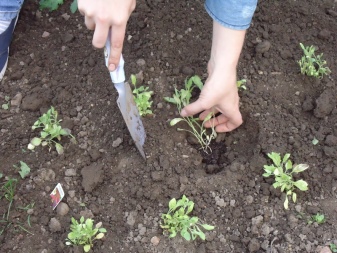
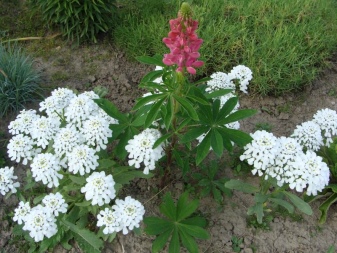
The plant can do without feeding, but if you do decide to fertilize, then it will be useful. Fertilize twice a year: the first - when the leaves are blooming, the second - when the buds are laid.
Perennial varieties in the third year need a transplant, since the bushes grow and lose their beauty, the inflorescences become small. If you are pruning the Iberis in the fall to form a bush, then it is optimal to remove the length of the stems by one third. The plant will look well-groomed, possibly even re-blooming. Pruning for the winter can be done to the ground, after which it is imperative to spud and feed.
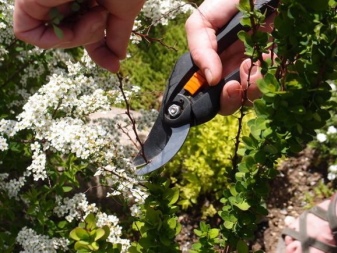
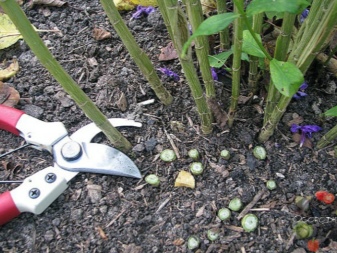
Reproduction methods
Seeds
To collect seeds, leave faded inflorescences on the stem for ripening. When they are ripe, they can be cut off and left in a dark place until they begin to crack. The collected seeds can be sown in the ground. It is favorable to do this in the fall. In the spring, small seedlings will hatch, which can then be planted for independent growth. The gap between seedlings should be at least 15 cm.

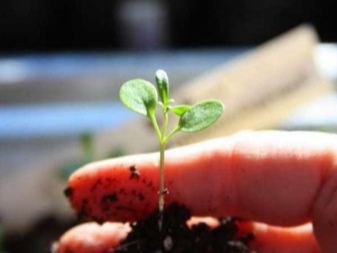
It is possible to leave the seeds on the plant for self-seeding. When seedlings grow near the main plant in the spring, they should simply be broken through or transplanted to another place. It is beneficial to do this in April or May. Blooming will begin in 45 days.
Cuttings
After the plant has bloomed, cuttings must be cut from last year's shoots.Their size should be 5–8 cm. After soaking them in a stimulating solution, plant them in moist soil in a sunny place and cover with a jar. In winter, it is better to insulate the jar with leaves or sawdust, and pour a small layer of earth on top. As soon as the frost ends in spring, carefully remove the container. The cuttings should already have a root and new leaves.
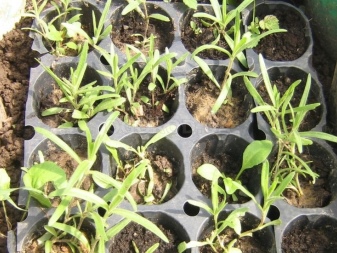
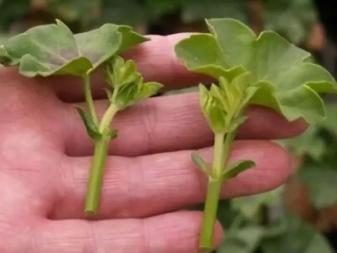
Rhizome division
For this, an adult lush shrub is selected, which is more than 5 years old. In early spring, they dig up a bush, cut off the top greens and divide the root evenly into 3 parts. Divided bushes can be planted in the designated area. Be sure to moisturize and trample.
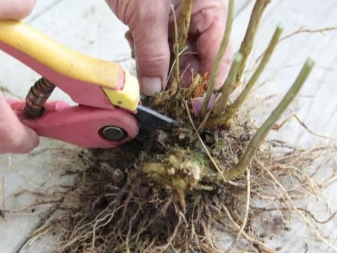
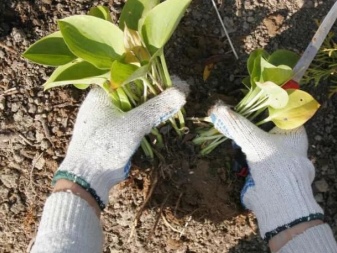
Varieties
Evergreen
The tough leathery foliage is elongated and has a bright malachite color. The ball-shaped bush itself reaches a height of 40 cm. Inflorescences in the form of a white umbrella bloom for about a month. A ripe receptacle produces many seeds that germinate quite well and quickly. In order for flowering to continue until the very frost, regularly remove faded inflorescences. It is undesirable to transplant the shrub, since it has a taproot. Unpretentious to the soil, but blooms better on rocky or sandy soils. The most notable varieties are Little Jam, Findel, Snowflake, Climax, Zwergeschneeflocke.
- Little Gem - a very lush, spreading shrub, reaching a diameter of up to 50 cm. The leaves are long, thin. Flowering begins in mid-spring. The many flowers on the shrub make it very noticeable, like a snow globe. The inflorescences are small (up to 15 mm in diameter), but very neat and voluminous.


- Findel - a shrub that grows in height only up to 25 cm. It branches along the ground with an evergreen path. Rapid flowering of snow-white radiant flowers can be seen in late spring.
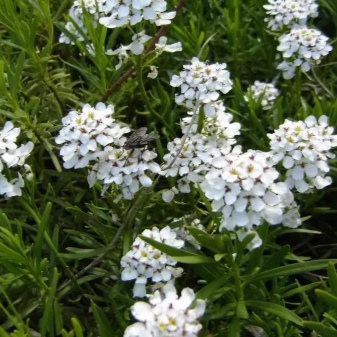
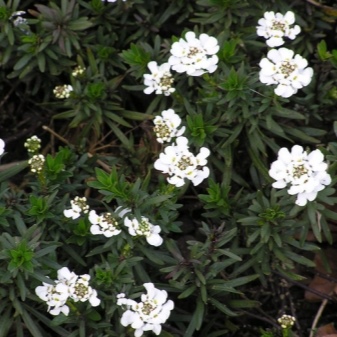
- "Snowflake" - small spherical inflorescences up to 6 mm in diameter adorn the undersized shrub. Reaches a height of up to 30 cm. Flowering (snow-white) begins in April.
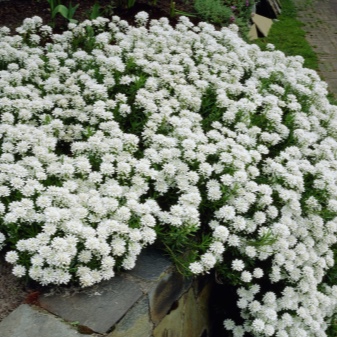

- Climax - the bush forms small, dense, glossy leaves, which on their stems simply spread over the soil, covering it with their greenery. Shrub up to 20 cm high adorns flowering of small white flowers. It begins in mid-spring. This variety is very good for creating a crown.
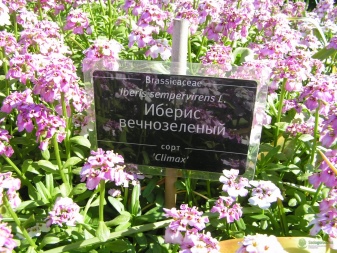
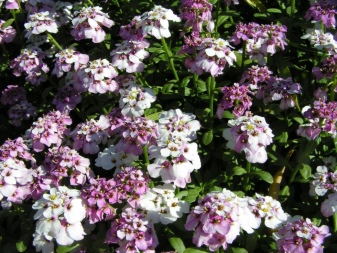
- Zwergeschneeflocke - a semi-shrub 15 cm high covers the ground with its dense, small leaves. Blooming with buds of a heavenly hue begins at the end of April and lasts about a month.
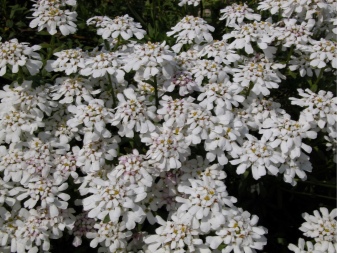
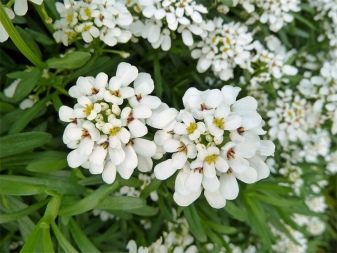
Gibraltar
It has a wide (up to half a meter) bush with narrow evergreen leaves. The flowers are pale pink, small in size, which then change their shade to white. In harsh climatic conditions, it blooms twice a year. The height of the bush is up to 20 cm. The most popular variety is Gibraltar Kenditaft - has distinctive lilac inflorescences, which (after a while) become snow-white. Candy tuff - a low shrub, has glossy dense leaves on a fleshy shoot. Flowering begins in early May and produces beautiful purple flowers. The inflorescences are rather large in size and resemble dahlias.
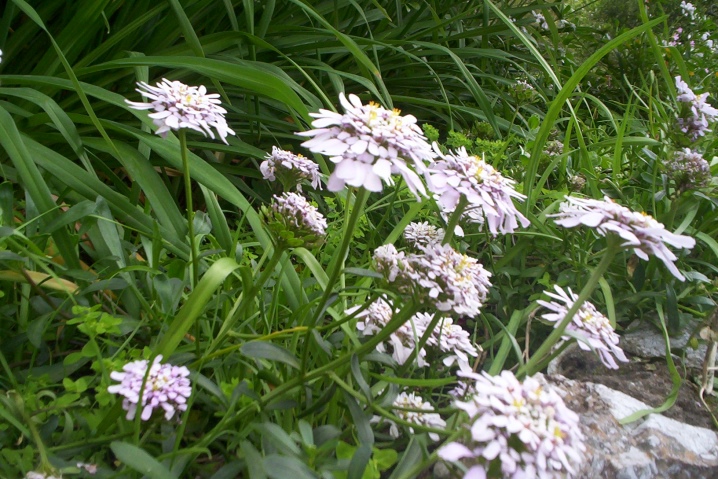
Crimean
Very low perennial, reaching a maximum of 7 cm in height. He loves warmth, does not tolerate frosts, so in winter he needs shelter. Has dense green leaves in the shape of a blade. Purple buds become snow-white after blooming. They bloom in April.
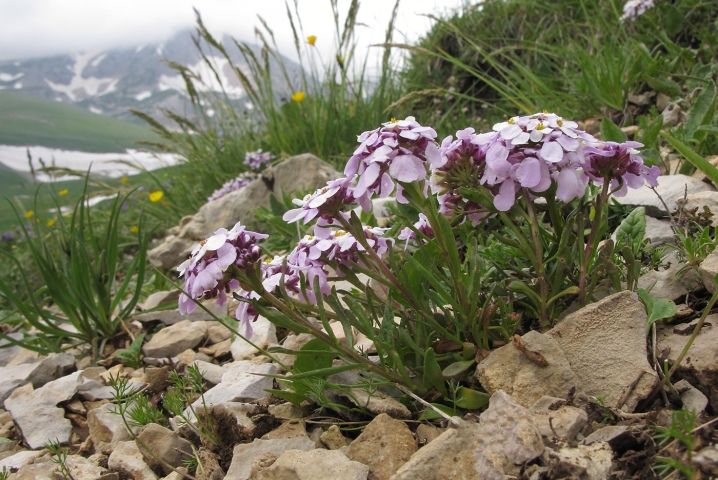
Rocky
Evergreen shrub, reaching a height of 13 cm. The bushes are dense, volumetric. During flowering, it resembles a powdered Christmas tree. Cream or pink buds remain on the bush for more than a month. Popular varieties are Pygmaea and Hyacintenblutige Riesen.
- Pygmaea - undersized shrub (up to 10 cm in height) with small snow-white flowers, which are combined into umbrella-shaped inflorescences. Leaves are thin, needle-shaped, rich green.

- "Hyacintenblutige Riesen" - opens in April, pleases with purple flowers. The shrub has a maximum height of 35 cm. It grows well in alpine slides.
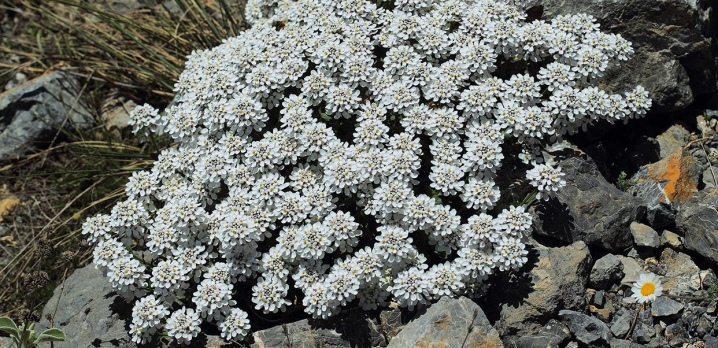
Diseases and pests
The most common parasites that infest Iberis are mealybugs, terrestrial fleas and aphids. When a flea appears, the formation of holes on the leaves is characteristic. To remove this pest, you just need to water the ground near the shrub. From the cabbage aphid, the leaves begin to curl. You can get rid of it with the help of such means as "Fitoverm" or "Mospilan". With abundant watering, the liquid is retained and can provoke the appearance of fungal infections. In this case, disinfect the shrub with any insecticide. If the Iberis is severely affected by an infection, it is better to dispose of it, and treat the growth site with a solution of Decis or Aktara.

The most common fungus for Iberis is the fungus from the genus Iberis. Therefore, before planting this shrub, treat the soil well with fungicides. If you have allowed an infection, remove the diseased branches, and pickle the shrub with a disinfectant solution. Another disease is cabbage keel. This fungus can live with a plant for a long time - more than 10 years. The consequence is that the plant stops growing altogether. The disease is incurable, so you need to disinfect the ground before planting with special solutions.
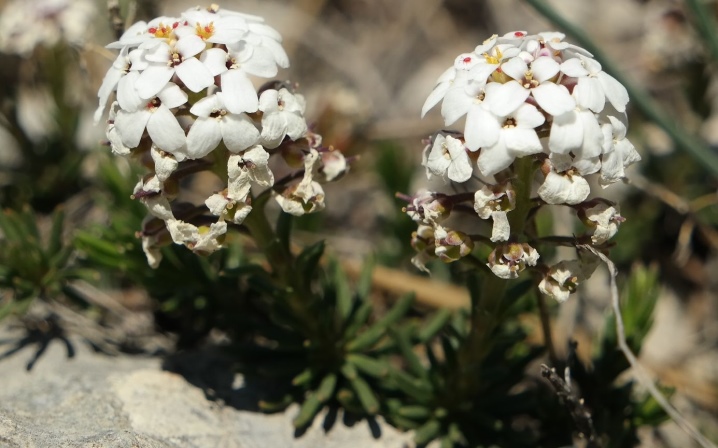
Application in panoramic design
With the help of Iberis, you can effectively highlight and decorate the borders. It will fit well into the design of the alpine slides. When planted among coniferous cypresses and thujas, it will be simply unique. With its flowering, it will organically dilute them. The garden plot with Iberis looks peaceful and homely. It is beautiful both as separate plantings and in composition with other flowering shrubs. Perennial Iberis tolerates company with different plants perfectly. Looks gorgeous next to phlox, carnation, hosta and yucca. When the snow melts, the Iberis will still be green. Daffodils and tulips, hyacinths and crocuses together with Iberis will create a spring composition in your flower bed.
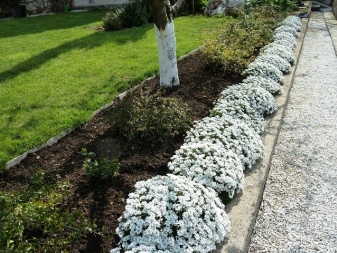
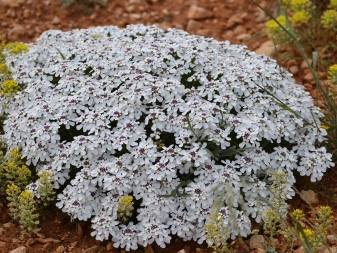
For information on how to properly care for perennial Iberis, see the next video.







































































































The comment was sent successfully.